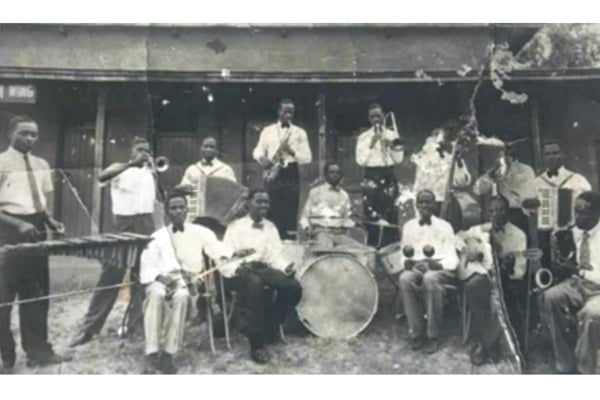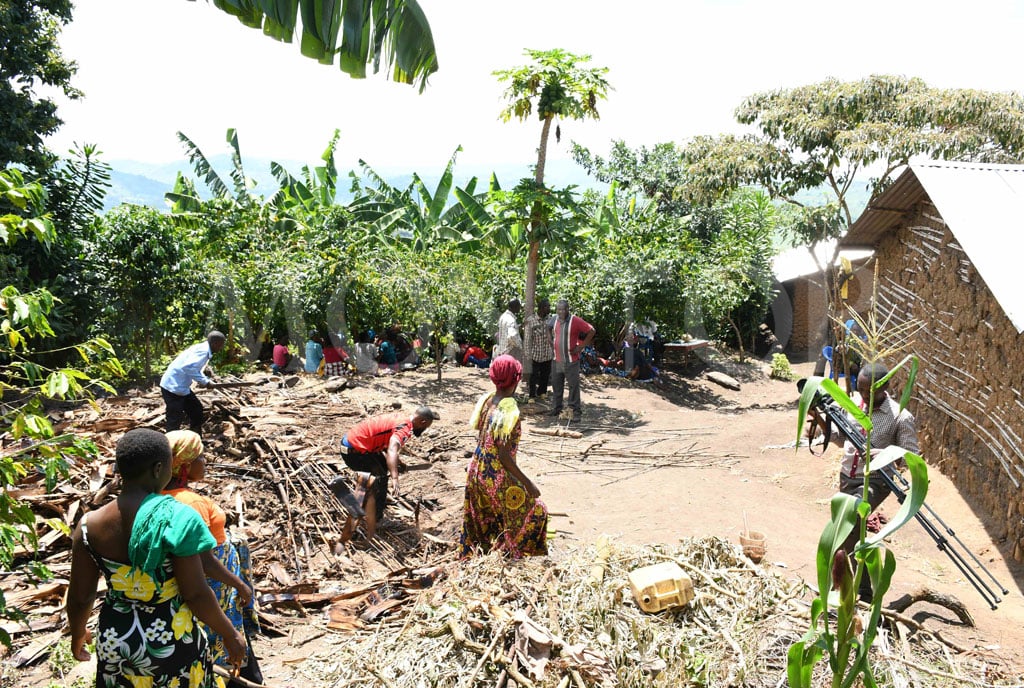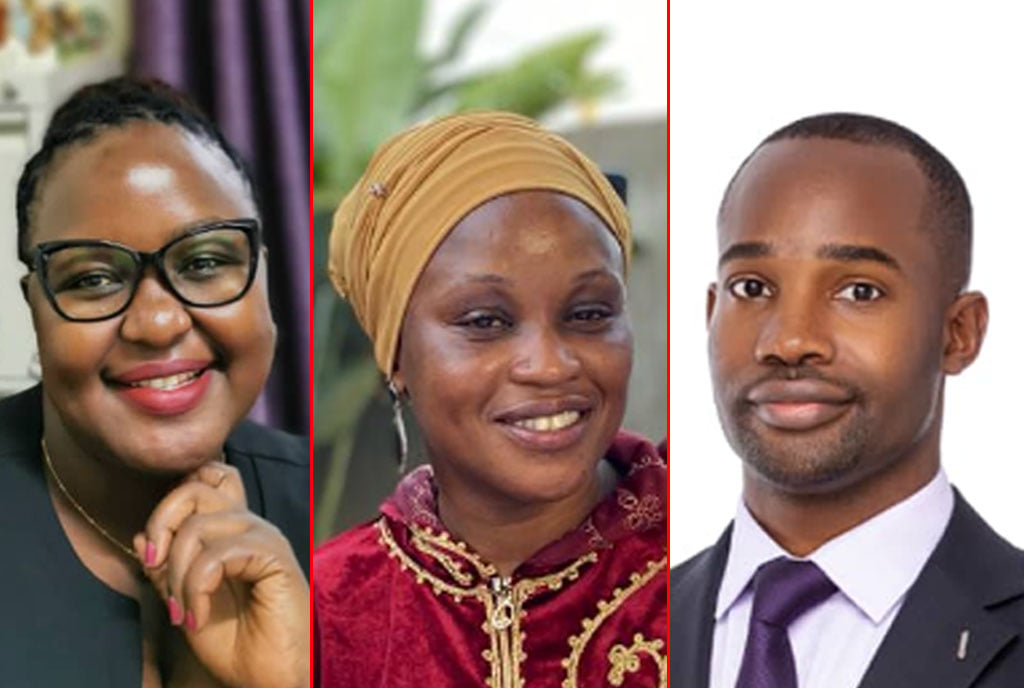Prime
How Masaka became a music powerhouse

Gerald Mukasa (circled) with his band Re-Craft. Mukasa came to the scene in the early 1970s, and he is presumed to be a student of the late Christopher Ssebadduka. PHOTO | COURTESY OF JASON DE BOERVIA YOUTUBE.
What you need to know:
- From being the birthplace of Kadongo Kamu music genre, Masaka teems with an abundance of music talents, who have left an indelible mark on Uganda’s music industry. Gabriel Buule traces the link between music and the Greater Masaka region.
When the late Eria Katende returned from the Second World War in late 1945, he came with an acoustic guitar, reportedly gifted to him by his friend as a souvenir.
Multiple sources share that Katende, who was the father of the late singer Herman Basudde, did not know how to play the guitar, so he hung it in his living room as décor.
Little did Katende know that his son Basudde would forge a worthwhile music career on a guitar whose strings had started getting damaged at the time.
It is understood that Basudde, a self-taught musician of the Mukyala Mugerwa fame, used the same guitar to compose his first single in 1986 and do live performances in Bubondo, his home village in Masaka. Basudde’s humble music journey eventually came to influence generations of musicians, not only in Masaka but also in other districts of central Uganda.
It should be noted that whereas Basudde is an influential musical figure in Masaka and Uganda, he is not the pioneer Kandongo Kamu musician, a genre synonymous with Masaka musicians.
Pioneering Ssebadduka
There is more to music legend Christopher Ssebadduka than his famous song Oluwala Olunyunyunsi. The 1975 ballad is one of Ssebadduka’s songs that shaped the Kadongo Kamu genre.
Christened by many as the grandfather of music, Ssebadduka is the known pioneer of the Kadongo Kamu genre, the oldest mainstream music genre in Uganda. Artiste Jack Kinobe Sserunkuuma shares that Ssebadduka played a bigger role in supporting upcoming musicians in the Greater Masaka region to realise their potential.
“He had a music group that groomed many talents in the region,” he explains.
Ssebadduka, who was born in 1926, left Masaka for Kampala to start street performances in the mid-1940s, but his legacy in Masaka became much stronger as he often returned to perform. Sserunkuuma shares that in 1955, he recorded a song titled Omukazi Malaya, sharing his account about prostitution in Kampala. With the first version of Omukazi Malaya played with the bowl-lyre, the recorded version, presumably the first Kadongo Kamu song to be commercially released, was greatly welcomed, especially by his fans in Masaka since it had been accompanied by an acoustic guitar, a new instrument at the time.
Ssebadduka’s poetic-musical flow relied on history, love, politics, and social life, a trend that shaped music in Uganda. He used his songs to communicate traditional wisdom and morals through anecdotes, stories, and social commentary.
“He banked on the Luganda language’s rich literature to showcase his special musical artistry. You will notice that most musicians from Masaka are not far from his style,” Sserunkuuma explains.
Uganda to the world
In October 1964, it was not just all about the canonisation of Ugandan Martyrs. History was also made after Ugandan music was exported to Europe. This was courtesy of the oratorio that was performed by a Ugandan choir led by one Joseph Kyagambiddwa.
A musical choreographer born in greater Masaka, Kyagambiddwa, changed the course of music in the Catholic Church, as the Vatican had allowed the Catholic Church to conduct Mass in local languages. Sematimba shares that Kyagambiddwa’s efforts have an influence on the use of the bow lyre, xylophone, drums, and other local instruments in Uganda’s music.
“It was the first time for local instruments to be played in Saint Peter’s Basilica. No one could imagine that a man from Kaloddo Kabunga in Greater Masaka would pull off such great music,” he adds.
Kyagambiddwa is said to have taught many musicians within the Catholic Church, especially in Masaka. Sematimba also notes that a boom in business in the area also played a part in Masaka’s music movement.
“Businessmen who used to travel to Kericho and Nakuru in Kenya used to return with musical instruments, especially acoustic guitars, and this was influenced by the demand,” he says.
He, however, notes that music in Masaka would have been far from where it is right now, but most icons in the industry died during their prime. Creatives, Sematimba further discloses, still had to rely on studios in Kampala, especially the 1976 Uganda Recording Agencies, an entity owned by Kisalale, Yeko Mukasa, and Edmund Batte.
Unsung legends
Gerald Mukasa came to the scene in the early 1970s, and he is presumed to be a student of the late Christopher Ssebadduka. Mukasa, whose major hit was the 1973 Nabadda, produced several songs that included Mini-Skirt, Mpawo Atalifa, and Kyakwambala, among others. He was the face behind local music group Re-Craft.
Edrisah Kenzo Musuuza, Alias Eddy Kenzo, who hails from Masaka, is Uganda’s only Grammy nominee and the only recipient of the BET award. The proprietor of Big Talent Entertainment is known for representing Uganda on a global scale. Other musicians from Masaka whose contributions will never go unmentioned include Geofrey Lutaaya, Livingstone Kasozi, and Mathias Walukaga.
Catholicism, Kyagambiddwa
Theatre artist Ibrahim Ssematimba shares that you cannot understate the Catholic Church’s influence on the development of music in Masaka. Ssematimba says back in the years, Muteesa II, then the Kabaka of Buganda, encouraged people to engage in performing arts, and the message was picked by the people in the Greater Masaka region.
In addition, he notes that leisure became part of people’s lives and paved the way for modern nightlife in 1968, when Tropical Inn became a centre for whoever was experimenting with their music career.
Ssematimba suggests that whereas Ssebadduka pioneered the commercial aspect of music in Masaka, the Catholic Church has for years done a great job nurturing talents through Catholic Church choirs and Catholic school music competitions.
“Unlike today, Christmas and Easter Carols were a great deal in Masaka due to the fact that even the attendance was for the selected few. School competitions also birthed many talents,” he explains.




